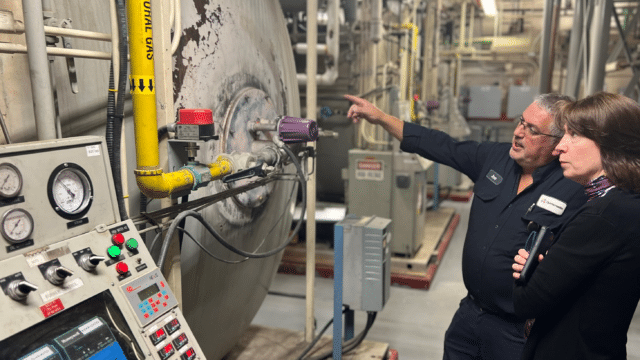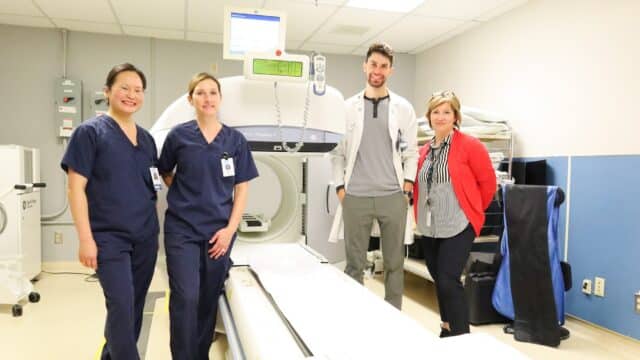Drug Diversion Prevention – It’s Up to All of Us
When it comes to drug diversion – “if you see something, say something.” That is the message from Pharmacy Technician Stacey Richard. Stacey has taken a lead role in using Omnicell analytics to prevent, identify and stop drug diversion at Quinte Health, and says it is up to everyone to keep our patients and our colleagues safe and ensure best practice in the handling of medications.
Drug diversion in a hospital setting happens when health care workers divert, or misuse, prescription medications intended for patients. Hospitals are subject to strict regulatory requirements regarding the storage, dispensing, and administration of medications and must report medication losses. 79% of Canadian hospital controlled-drug loss reports are “unexplained losses” – a statistic Stacey finds shocking as, ideally, all medication losses should be explainable.
“It gives you an idea of the actual magnitude of the issue because we all like to think it doesn’t happen,” Stacey explained. “The problem is understated, undetected and underreported. So rather than be naive to the topic, at Quinte Health, we have taken it a bit further to include education as well as being proactive to try to catch anything before it becomes an issue.”
Whether a staff member diverts Tylenol to treat a headache or an Opioid to serve an addiction – drug diversion impacts patients, colleagues, and the organization. It also puts the staff member at risk of losing their professional license and facing criminal charges.
According to Stacey, the audits she does are aimed at identifying, educating, and empowering staff with the information they need to appropriately manage medications. Audits are a valuable tool for continuous improvement by providing insights into our medication management processes. By analyzing audit findings, we can identify weaknesses and implement improvements to prevent future diversion incidents and enhance overall patient safety.
“The primary purpose of drug diversion audits in hospitals is not punitive,” said Stacey. “Their purpose is to enhance patient safety and address the underlying issues that may lead to diversion whether it is bad practice or an addiction issue. This approach focuses on preventing future incidents rather than simply punishing past ones.”
Stacey encourages health care workers to report suspicions or concerns without fear of retribution and wants to promote a culture of openness. This early detection can help identify individuals who may be struggling with substance abuse or other issues and provide them with the support and assistance they need.
“Addiction knows no boundaries, and anyone can develop a substance use disorder – including health care workers,” Stacey adds. “Acts of drug diversion can lead to patients receiving substandard care, including being cared for by an impaired individual, receiving less pain medicine than they need, or developing an infection if a provider tampers with an injectable drug.”
Common diversion methods include issuing medications more frequently than their peers, issuing duplicate doses of medication, and stealing from waste by not wasting the full amount or wasting multiple meds at the end of a shift. Red flags to look for that could indicate possible drug diversion include frequent disappearance for prolonged periods, complaints from a staff member’s patients about pain, having more accidents than peers, offering to get meds for other staff members, and recurrently removing controlled medications near the end of a shift.
#Connection
#StrongerTogether




